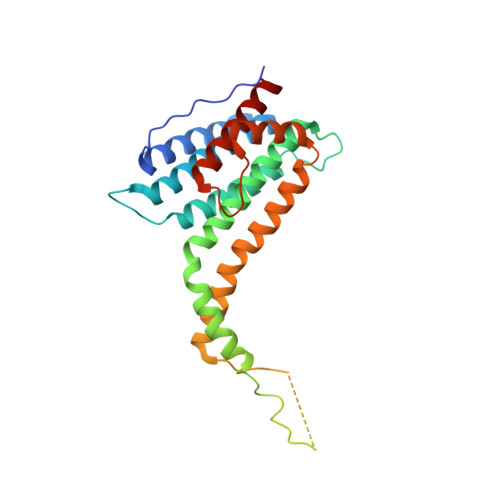Acetylation of histone H3K27 signals the transcriptional elongation for estrogen receptor alpha.
Gao, Y., Chen, L., Han, Y., Wu, F., Yang, W.S., Zhang, Z., Huo, T., Zhu, Y., Yu, C., Kim, H., Lee, M., Tang, Z., Phillips, K., He, B., Jung, S.Y., Song, Y., Zhu, B., Xu, R.M., Feng, Q.(2020) Commun Biol 3: 165-165
- PubMed: 32265480
- DOI: https://doi.org/10.1038/s42003-020-0898-0
- Primary Citation of Related Structures:
6KN5 - PubMed Abstract:
As approximately 70% of human breast tumors are estrogen receptor α (ERα)-positive, estrogen and ERα play essential roles in breast cancer development. By interrupting the ERα signaling pathway, endocrine therapy has been proven to be an effective therapeutic strategy. In this study, we identified a mechanism by which Transcription Start Site (TSS)-associated histone H3K27 acetylation signals the Super Elongation Complex (SEC) to regulate transcriptional elongation of the ESR1 (ERα) gene. SEC interacts with H3K27ac on ESR1 TSS through its scaffold protein AFF4. Depletion of AFF4 by siRNA or CRISPR/Cas9 dramatically reduces expression of ESR1 and its target genes, consequently inhibiting breast cancer cell growth. More importantly, a AFF4 mutant which lacks H3K27ac interaction failed to rescue ESR1 gene expression, suggesting H3K27 acetylation at TSS region is a key mark bridging the transition from transcriptional initiation to elongation, and perturbing SEC function can be an alternative strategy for targeting ERα signaling pathway at chromatin level.
Organizational Affiliation:
Center for Nuclear Receptors and Cell Signaling, Department of Biology and Biochemistry, University of Houston, Houston, TX, 77204, USA.














